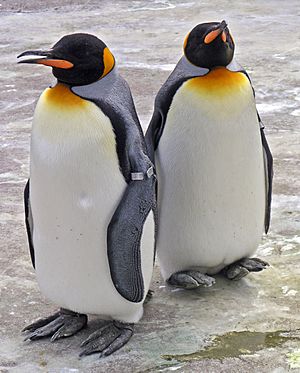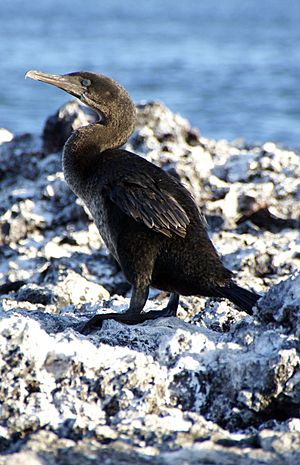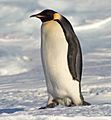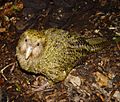Flightless birds facts for kids

Flightless birds are amazing birds that cannot fly. Instead, they are experts at running or swimming! These birds developed from ancestors who could fly. Today, there are about 60 different kinds of flightless birds. Some of the most famous ones include the ostrich, emu, cassowary, rhea, kiwi, and penguin.
Flightless birds have some special features. Their wing bones are smaller than those of flying birds. Also, they have a very small or missing "keel" on their chest bone. The keel is where strong flight muscles usually attach. Interestingly, flightless birds also have more feathers than birds that fly.
New Zealand is a special place for flightless birds. It has more species than any other country! This includes kiwis, several types of penguins, and the takahē. For a long time, New Zealand had no large land predators. This meant birds didn't need to fly away from danger.
The smallest flightless bird is the Inaccessible Island Rail. It is only about 12.5 centimeters long and weighs about 35 grams. The largest living flightless bird is the Ostrich. It can be 2.7 meters tall and weigh 156 kilograms! Ostriches were once raised for their beautiful feathers. Now, they are farmed for their meat and leather.
Contents
Why Some Birds Don't Fly
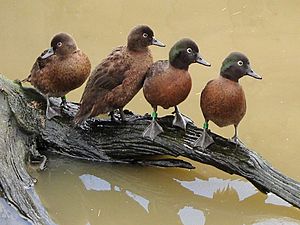
It might seem strange that some birds lost the ability to fly. But flying uses a lot of energy! Birds fly to find food, build nests, and escape predators. They can also travel far to find the best places to live. For example, many birds migrate to different parts of the world.
However, sometimes flying is not always the best option. On some oceanic islands, there are very few or no land predators. This means birds don't need to fly to stay safe. Also, strong storms can blow flying birds far away from small islands. If they lose the ability to fly, they stay safe on their island home.
When birds don't need to fly, they can become larger and heavier. This is why many flightless birds are quite big. Even though there are about 10,000 bird species, only about 60 are flightless today. Many more flightless bird species existed before humans arrived on islands.
Examples of Flightless Birds
Here are some examples of flightless birds that have lived during or after the Holocene period (our current geological period).
Ratites

- Ostrich
- Emu
- Cassowaries
- Moa (extinct)
- Elephant birds (extinct)
- Kiwis
- Rheas
Waterfowl (Anseriformes)
- Dromornis (extinct)
Penguins (Sphenisciformes)
Gulls, Terns, Auks (Charadriiformes)
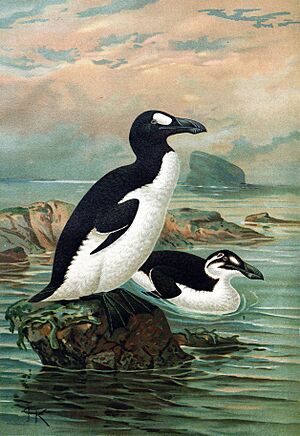
- Great Auk (extinct)
Parrots (Psittaciformes)
Pigeons, Doves (Columbiformes)
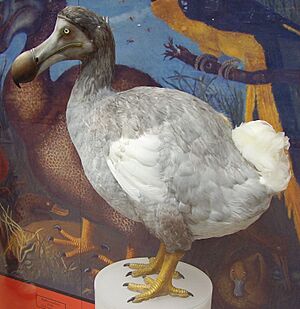
- Dodo (extinct)
- Rodrigues Solitaire (extinct)
See also
 In Spanish: Ave no voladora para niños
In Spanish: Ave no voladora para niños
Images for kids
-
An Okarito kiwi (Apteryx rowi), also known as the rowi
-
Ostriches are the largest extant flightless birds as well as the largest extant birds in general.


